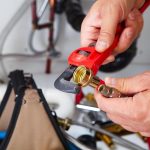Today’s vehicles (meaning those manufactured after 1997), come equipped with one wheel bearing and hub assembly attached to each tire and wheel on the car. It also includes the studs that attach your wheels to your vehicle and is usually mounted on the suspension and steering systems on the front/rear axles. As such, these assemblies are designed to last for the lifetime of the car, but it is subject to getting worn out or breaking prematurely.
How Damages Occur
Primarily, this part of the vehicle is damage-prone in various situations, such as striking the curb, getting in an accident and hitting a pothole. While this part does take a lot of abuse, most mechanics rarely consider this as a problem when repairs need to be made to the wheels, tires, coils, suspension parts, shocks, or struts. When it does become damaged or has premature wear, it shows warning symptoms that can be recognized by average car owners.
Roar
Usually, when a wheel hub assembly replacement is needed, you’ll hear a roaring sound in the wheel/tire area. It may sound like a metal-on-metal grinding sound, which is why many people think their brakes are the problem. The sound happens because there is little to no lubrication in the bearing or because the bearing is misaligned or cracked. Most people cannot tell which bearing is damaged, but they can tell that there is a problem.
Vibration
When a replacement is necessary, you may also notice that the steering wheel vibrates, even at low speeds, and may get worse when you accelerate or go faster. Another common complaint is that the wheels feel loose when you drive or make turns.
Clicking
A hub assembly replacement may also be required if you notice clicking sounds that seem to click faster as you drive faster.





